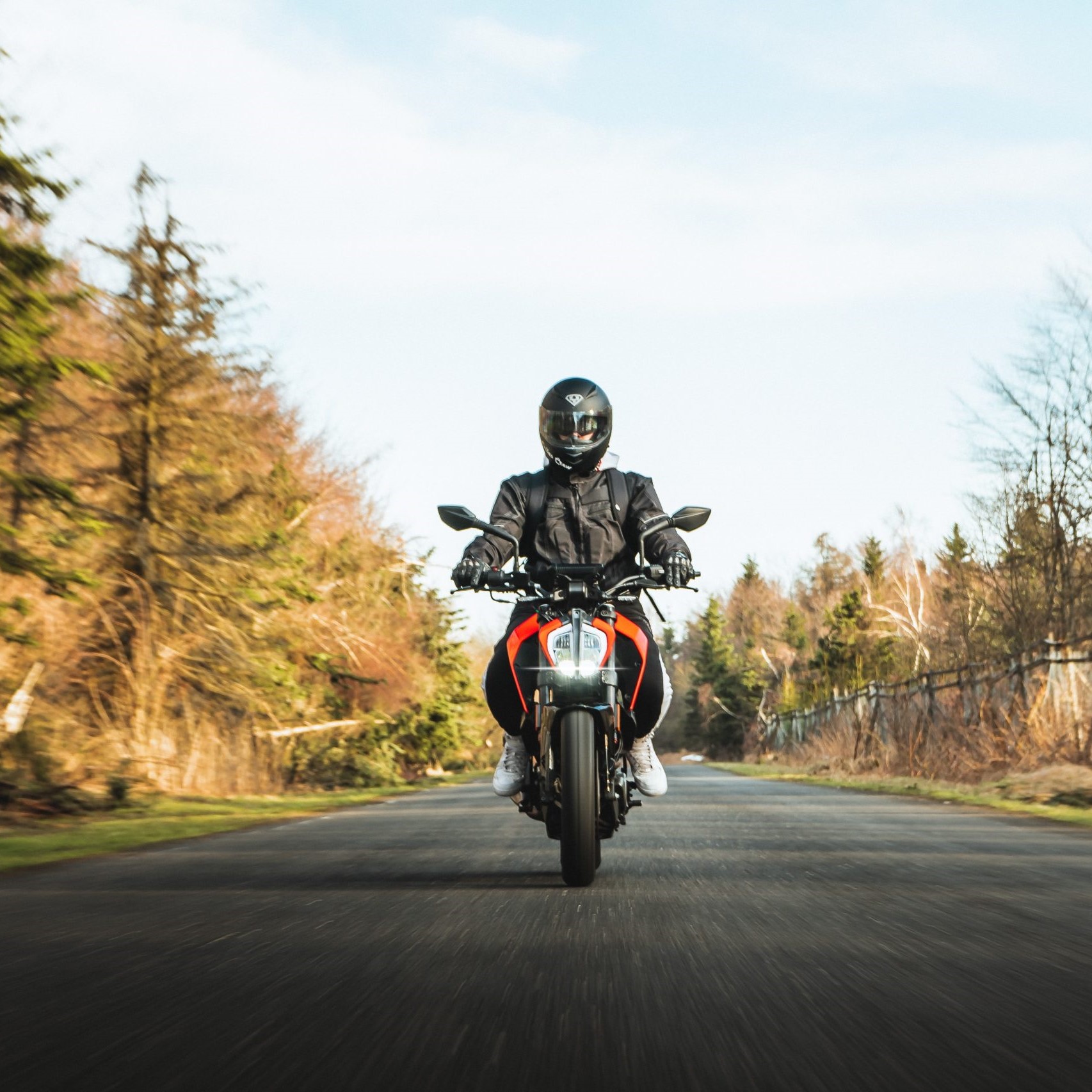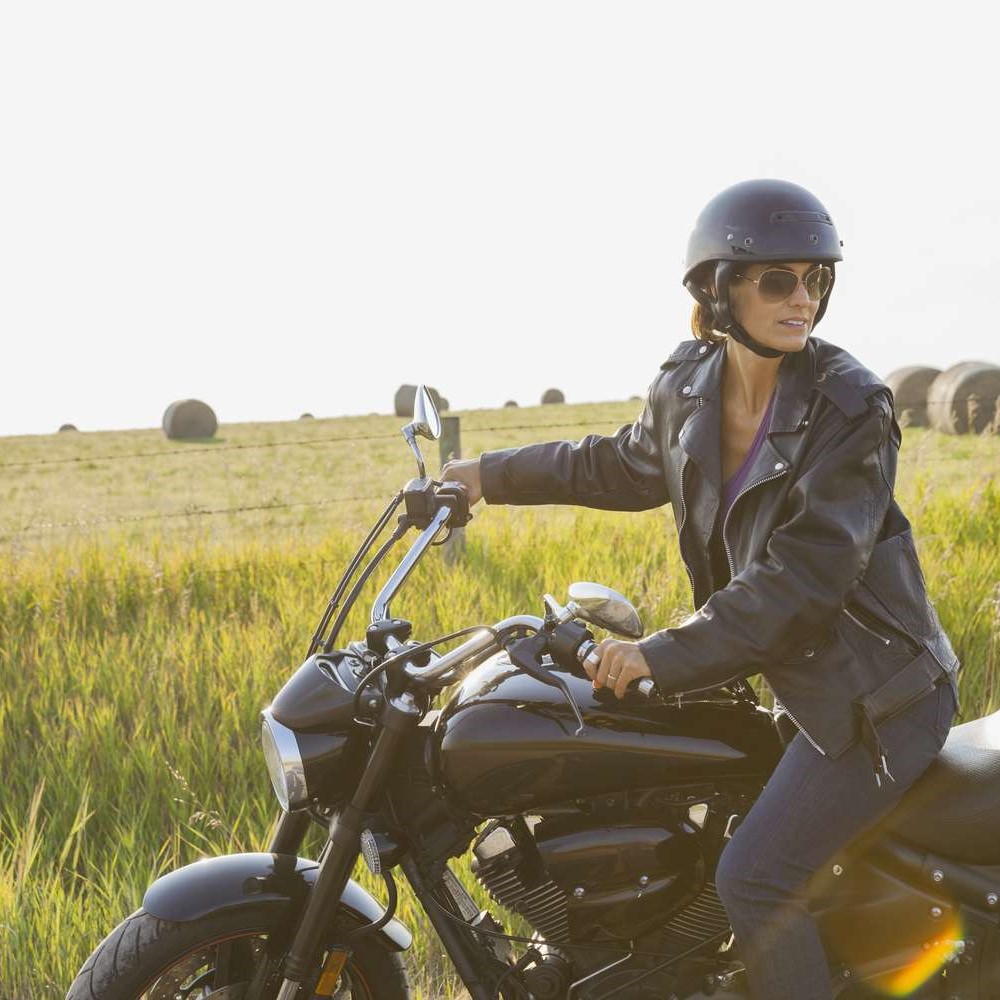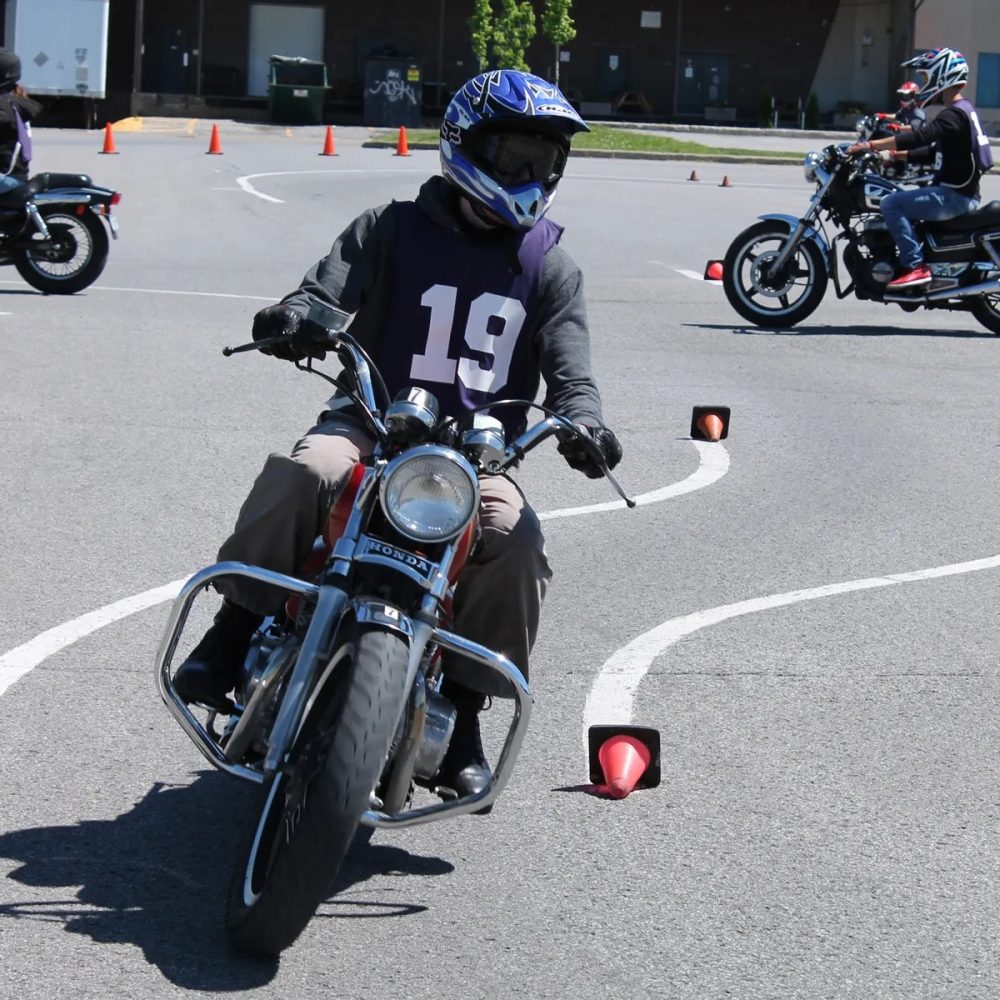Introduction: How to Drive Motorcycle
Riding a motorcycle can be a thrilling experience, combining the freedom of the open road with the excitement of powerful machinery. However, it transforms into a responsibility that requires skill, knowledge, and respect. In this comprehensive guide, we will explore everything you need to know on how to drive motorcycle safely, including essential techniques, safety gear, and important road practices. By the end of the journey, you will have a well-rounded understanding of what it takes to be a confident motorcycle rider.
Gear Up for Safety
Embracing safety starts with gearing up properly. It’s the shield against the elements and protects you in case of an accident.

The Importance of a Proper Helmet
A helmet is your most critical safety gear when learning how to drive motorcycle. Choose a DOT-compliant helmet that fits snugly. It should not obstruct your vision.
Eye and Face Protection
Shield your eyes and face with goggles or a face shield. Ensure they are shatterproof and won’t impair your sight.
Protective Clothing, Gloves, and Footwear
Wear long pants and jackets to guard your skin. Gloves enhance grip and protect your hands. Over-ankle boots support and shield your feet.
Familiarize Yourself with Motorcycle Controls
Before you hit the road, it is essential to know your motorcycle’s controls like the back of your hand. This knowledge keeps you in command and enhances your safety. Each control is there to ensure smooth operation and a responsive ride. Let’s explore what you need to understand.
Understanding the Handlebars and Throttle
Handlebars are your steering guides; they point where you want to go. The throttle, nestled in the right handlebar, manages your speed. Twisting it towards you revs up the engine, twisting it away slows you down. When released, it should spring back.
The Front and Rear Brakes
Brakes are vital for safe stops. The right hand operates the front brake lever, while your right foot controls the rear brake. Learn to use both, as they work together to stop your motorcycle effectively.
How the Clutch and Gear Shift Work
On the left handlebar is the clutch. Squeeze it to shift gears; release to engage. The shift lever, by your left foot, selects the right gear. Practice smooth coordination between the clutch, throttle, and shift lever for gear transitions.
Starting the Motorcycle: Ignition and Kickstand
To start your motorcycle, turn on the ignition switch and ensure the bike is in neutral. Pull the clutch and press the starter button. Before you throttle away, remember to flip up the kickstand with your foot.
Inspecting Your Motorcycle Regularly
Regular motorcycle inspections are key for your safety and your bike’s longevity. It’s a crucial habit that should become second nature, ensuring that your ride is roadworthy before every journey.
Checking Tires and Air Pressure
Begin with your tires. Check if air pressure meets the manufacturer’s recommended levels. Look for signs of wear or damage that may need attention.
Fluid Levels and Battery Maintenance
Next, check oil, coolant, and other fluid levels to make sure they’re topped up. Inspect the battery; clean terminals and ensure it’s charged.
Ensuring Lights and Signals Function
Test all lights and signals. Your headlight, brake lights, and turn signals should work to communicate with other drivers.
Brake, Chain, and Mirror Checkup
Examine brakes for responsiveness, and the chain for proper tension and lubrication. Adjust mirrors for clear rear views on both sides.
The Basics of Starting and Mounting
Learning how to drive motorcycle begins with mastering the basics. Starting the engine and mounting the bike are the initial steps every rider must feel comfortable with. Here’s your quick guide to getting started on the right track.
Neutral Gear and Engine Ignition
Before you can enjoy the thrill of the road, you need to start your engine properly. First, make sure your motorcycle is in neutral gear. The neutral indicator on your dashboard should be lit. Then, turn on the ignition switch and listen for the electrical system to activate. With the clutch pulled in, press the starter button. When the engine purrs to life, you are ready for the journey ahead.
Learning these steps helps prevent accidental stalls or abrupt starts. Once the engine is on, remember to check your surroundings and prepare to mount your motorcycle safely.
Proper Mounting Techniques for Stability and Balance
Mounting your motorcycle correctly is important for stability. Approach your bike from the left side. Hold onto the handlebars and swing your right leg over the seat. Gently sit down, ensuring that both feet can touch the ground. This helps you stay balanced. Check that you have a firm grip on the handlebars and your mirrors are adjusted to see behind you.
Proper mounting techniques are crucial for control and balance once you start riding. They set the stage for a safe and enjoyable experience. Next, you’ll learn how to manage the throttle and brakes, which are essential for controlling your speed and navigating the road safely.
Mastering Throttle and Brakes
To control your motorcycle’s speed, you must master the throttle and brakes. When done correctly, you’ll enjoy a smooth and safe ride.
Finding the Right Throttle Grip
Getting the right grip on your throttle is key. Hold it like you would a screwdriver, with ease. Roll it towards you to speed up, and away to slow down. Always make sure your wrist is flat to prevent fatigue. Remember that a relaxed grip can help you maintain control and respond quickly.
Learning to Use the Front and Rear Brakes Effectively
Knowing how to brake properly is vital. Begin by lightly pressing on the rear brake with your right foot. At the same time, gently squeeze the front brake lever with your right hand. This combo helps you stop smoothly. Don’t grab or slam; sudden actions can lead to skids. Practice makes perfect. So take time to get familiar with the feel and response of both brakes. With each ride, you’ll get better at using them together.
By mastering the throttle and brakes, you are ensuring a safer and more enjoyable journey on your motorcycle.
Gear Shifting 101
Mastering gear shifting is crucial for a smooth ride. Understanding how to shift gears helps you control the bike’s power.
The Role of the Clutch in Gear Transitions
The clutch plays a key part in gear shifting. Squeeze the clutch lever to change gears. It disconnects the engine from the transmission. This allows you to move the shift lever without stalling the bike.
When you engage the clutch, the gears can change. As the clutch releases, the engine and transmission reconnect. This should be a smooth process. The right timing ensures a seamless transition.
Practicing Gear Shifting: Upshifting and Downshifting Basics
Shifting gears needs practice to perfect. For upshifting, you increase gears as you gain speed. Roll on the throttle while releasing the clutch gently.
For downshifting, slow down first. Then, squeeze the clutch and tap the shift lever down. Let out the clutch smoothly and apply a bit of throttle to match the lower gear.
Remember to shift one gear at a time. Skipping gears can jerk the bike. It may also cause loss of control.
Aim to be gentle and precise with every shift. This avoids wear on the bike and helps you keep steady on the road.
Practicing these basics makes gear transitions smooth and natural. Over time, you’ll shift without a second thought. This allows you to focus more on the road and less on the controls.
 Turning and Cornering Skills
Turning and Cornering Skills
Navigating turns and corners calls for skill and caution. Each move you make must be deliberate and controlled. Turns are not just a simple matter of steering, they involve an understanding of lean and speed. Mastering these skills is vital for safe and enjoyable motorcycle riding.
The Art of Safe Turning
Safe turning begins with reducing your speed before the turn. This prevents sudden, sharp movements. Look through the turn, moving only your head—keep your body stable. Gentle, steady pressure on the handlebars guides your motorcycle’s path. Trust the bike’s design; it will lean naturally into the turn with you.
Leaning Techniques and Speed Control
Leaning into turns helps maintain balance and a smooth trajectory. For slight turns, a subtle lean with the bike is enough. Sharp turns demand a deeper lean, but only the bike should lean in slow, sharp turns; keep your body upright. Avoid braking in a turn; this keeps control. Use the throttle to exit the turn. Gradually adding speed stabilizes the bike. Mastering lean and speed ensures you carve turns safely and with confidence.
Stopping and Braking Strategies
Stopping a motorcycle safely is a skill you need to master. Here are key strategies for effective stopping.
Effective Braking and Downshifting
To stop smoothly, start with gentle pressure on both brakes. Squeeze the front brake. Press down on the rear brake. As you slow down, pull in the clutch. Shift down one gear at a time. Match engine speed to your lower speed before releasing the clutch. Practice this to get a feel for your bike’s response.
For emergency stops, use both brakes firmly. Keep the bike upright. Avoid locking the wheels. If the rear wheel locks, keep it locked until you stop. If the front wheel locks, release the brake and reapply gently.
Using Brakes to Signal and Maintain Control
Always use brakes to signal you’re slowing down or stopping to others on the road. This engages your brake lights, alerting drivers behind you. Try to stop in a way that gives you control and options. Keep the motorcycle steady and straight. Put your left foot down first as you come to a stop. Use your right foot to balance and control the bike if needed.
In traffic, avoid sudden stops unless necessary. Instead, use progressive braking. Start early, and increase brake pressure smoothly. This way, you have more control and it’s safer for you and others.
By following these strategies, you’ll stop and brake in a way that keeps you in command of your motorcycle.
Lane Positioning for Visibility and Safety
Good lane positioning is key for being seen and staying safe. It’s about where you place your bike.
Optimal Lane Positions Varying by Situation
Every road situation calls for a different lane position. There’s no one-size-fits-all rule here. You must adapt. In traffic, you may want to be where you’re most visible. That’s often the left or right third of a lane. On highways, the middle can sometimes be best, avoiding car tire grooves that collect oil. Change as needed, but always think about the best spot. Look ahead, anticipate changes and act accordingly.
Maximizing Visibility to Other Drivers
To stay safe, you need to be seen. Ride where you have the best view and others can see you. Avoid blind spots. Stay clear of large vehicles that block you from view. Use your lights, day and night, to stand out. Signal well in advance before you turn or change lanes. These actions grab attention. They make it clear what you plan to do. Be predictable to others on the road. This way, you steer clear of trouble and ride with confidence.
 The Value of Motorcycle Training Schools
The Value of Motorcycle Training Schools
Knowing how to drive motorcycle safely is crucial. While self-teaching might seem possible, it’s not always enough. Motorcycle training schools provide professional guidance that can be vital in ensuring safe riding practices.
Getting Professional Guidance
It’s one thing to understand the basics of motorcycle controls and safety gear. It’s another to apply them correctly on the road. Professional instructors at training schools teach you to ride properly. They offer hands-on experience and personalized feedback. They help you develop correct habits from the start. Plus, they teach you defensive riding techniques. These skills could save your life one day.
Advancing Beyond the Basics for Safe Riding
There’s more to riding than shifting gears and leaning into turns. Advanced courses help you master complex skills. You learn how to handle heavy traffic, bad weather, and emergency situations. You get to practice real-world scenarios under the watchful eye of an expert. This deepens your knowledge and boosts your confidence. Riding with skill comes with practice and proper instruction. Training schools provide the resources and safe environment you need to become a proficient rider.
Conclusion: How to Drive Motorcycle
Now that you have a deeper understanding of the various aspects involved in how to drive motorcycle, it’s time to hit the open road with confidence. Always prioritize safety, from wearing necessary gear to being aware of your surroundings. Embrace the thrill of motorcycle riding while being responsible for yourself and others on the road. Remember, practice leads to mastery, and soon you’ll find yourself navigating diverse terrains with ease. Always keep learning and improving, as the journey doesn’t end here. So, gear up, enjoy the ride, and continue exploring how to drive motorcycle effectively.
